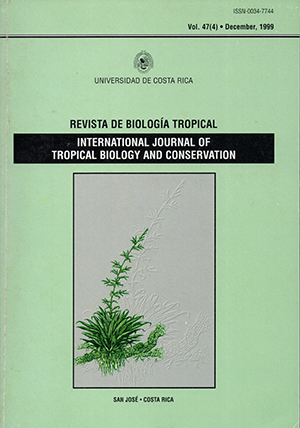Resumen
Among the wasps, the Masarínae are a peculiar subfamily. It is the only group of wasps Ihat provisions brood cells with pollen and nectar. The studied species Trimeria howardi Bertoni, 1911, was until recentIy abundant in Ribeirao Preto, Sao Paulo, southeastern Brazil. This paper deaIs with plant species visited by T. howardi, in relation to the species' annuaI cycle of activity, based on periods of nest foundation, flight activity, and development stages of immatures present in the cells. During the study period (five years) T. howardi visited four species of plants in two botanical families: Bidens pilosa L.(Asteraceae); Xanthium spinosum L. (Asteraceae); Stylosanthes guianensis (Aulb). Sw. (Leguminosae), and Zornia diphylla (L.) Pers. (Leguminosae). Based on the number of visited families, T. howardi can be considered a narrow polylectic species. In general, the species annual activity cycle consists of three phases: Active phase: January to July; Inactive phase: August - September; Active phase: October to December. The annuaI cyc1e is bivoltine or multivoltine and the diapause is facultative, because it occurs in a single generation during the year.
##plugins.facebook.comentarios##

Esta obra está bajo una licencia internacional Creative Commons Atribución 4.0.
Derechos de autor 1999 Revista de Biología Tropical
Descargas
Los datos de descargas todavía no están disponibles.






